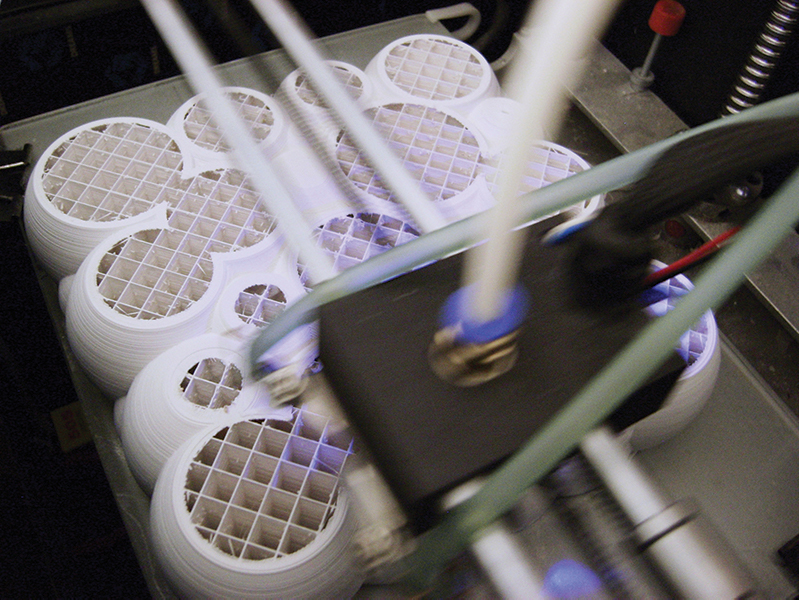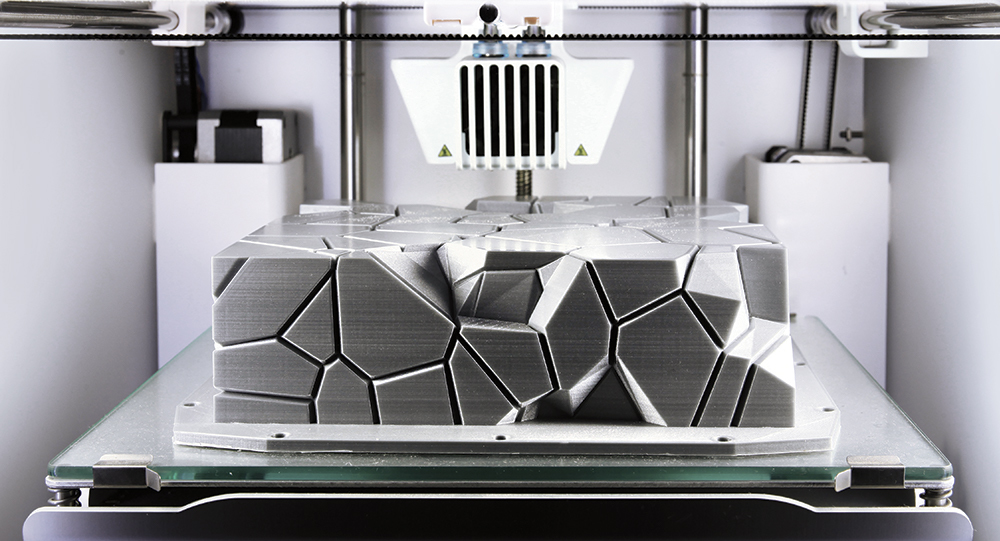When most people hear the word geometry, they think math. But for 28-year-old Dinara Kasko, it equals mouthwatering landscapes of meringue, mousse, mascarpone, and cake enrobed in triangulations of chocolate or spheres of fruit glaze. Born in the Ukraine, Kasko studied and practiced architecture before changing course, opting to fuse her love of pastry making with skills gleaned after working as a designer for three years in the Netherlands. Her confections thrill the eye with their geometric compositions, realized with 3-d-modeling technology, silicon molds, and the occasional feat of engineering. If Kasko has a muse, it might be Marie-Antoine Carême (1784–1833), the architect of French haute cuisine. “Most noble of all the arts is architecture,” the chef and pâtissier once said, “and its greatest manifestation is the art of the pastry chef” — words that Kasko appears to have taken to heart.
Edible complex

Geometrical Kinetic Tarts
Streusel, almond sponge cake, blackberry-blueberry confit, mousse with mascarpone and blueberry, white chocolate
A collaboration of three artists — sculptor, engineer, and pastry chef — this tart was made for So Good, a Spanish pastry magazine. Kasko transformed Miami artist José Margulis’ plastic, aluminum, and acrylic 3-d drawings into a continuum of edible layers. A friend with a milling machine helped cut out slices from many sheets of white chocolate. Kasko assembled the pieces and then placed the composition on top of the berry tart.



The Bubbles with
Exotic Fruit
Mango and guava confits, ladyfinger sponge cake, crunchy layer, white chocolate mousse with meringue and lemon, neutral glaze
After this cake appeared on the cover of So Good, the Italian company SilikoMart put the mold into mass production. Kasko used biomimicry — in this case, of the form that bubbles make — combined with 3ds Max modeling software and a 3-d printer to cast the silicone mold. To finish the dessert, she covered the bubbles in a thin layer of glaze applied with a spray gun.


Antipavlova Cake
Meringue, mousse with mascarpone, shortcrust, mango, strawberry, and raspberry powder
The classic Pavlova is an airy, meringue-based confection with a crisp shell, traditionally decorated with a topping of whipped cream and fresh fruit. Kasko calls this interpretation — with its cream and fruit elements inside the spiky meringue armor — one of her favorite cakes.

Cluster Cake
Chocolate mousse, raspberry and black currant confits, chocolate sponge cake, shortcrust, and chocolate spray
Kasko worked with parametric designer Andrej Pavlov to partition a plane into several fragments, using a Voronoi diagram to create the mold. The finished cake does not look like a whole object, she says, but like it consists of items not necessarily connected to one another.


Algorithmic Modeling Cakes
Mousse with ruby chocolate and meringue, berry confit, biscuit, raspberries, ruby ganache, and a crisp chocolate layer
When Kasko was invited to Shanghai in 2017 to participate in a presentation of a new, naturally pink, fruit-flavored chocolate variety made from the ruby cocoa bean, she wanted to develop a form that would emphasize its bright, unusual taste. Her approach was to create a set of 81 individual cakes — each one unique in shape — that together would form a single composition. Kasko was inspired by the artist Matt Shlian, who engineers pieces from folded paper, to use a pyramid, altering the tilt of each object and the area of each top plane.

Geometric Desserts
Chocolate sponge cake, streusel with nuts, mousse with Valrhona Caramelia chocolate, ganache with Caramelia and yuzu, jelly with yuzu and passion fruit
The cake, which is filled with mousse and jelly, has a surface that resembles concrete. Kasko modeled six molds to convey sharp lines and a seemingly inedible appearance. From left to right, the first row shows Figures #4, #5, and #2. The second row shows three different angles of Figure #1. The third row shows Figure #3 followed by Figure #6, first whole and then sliced open to reveal its delicious interior.
